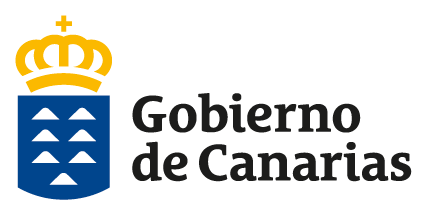Percepción social y evaluación de políticas públicas de juventud ante el auge de los NFT (Non-Fungible Tokens)
DOI:
https://doi.org/10.36151/RCAP.ext.3Palabras clave:
éxito social, juventud, creatividad, NFTResumen
El objetivo del presente trabajo es analizar, por un lado la percepción social en torno al auge de los NFT (Non-Fungible Tokens) como canal que vehiculiza la creatividad, especialmente en la juventud actual y en los creadores, así como detectar tendencias de políticas públicas en torno a la creación y difusión de bienes digitales, fundamentalmente en lo que concierne a la evaluación de dichas políticas públicas. Para ello, según la triangulación metodológica, combinando métodos cuantitativos y cualitativos, se recurrirá al estudio de las tendencias de búsqueda a través de Google Trends, y además se realiza una entrevista semiestructurada a responsables públicos vinculados con la evaluación de políticas a nivel nacional. Los resultados del trabajo permitirán la formulación de mejores políticas públicas que sean capaces de englobar este nuevo fenómeno.
Descargas
Referencias
Ante, L. (2022). The non-fungible token (NFT) market and its relationship with Bitcoin and Ethereum. FinTech, 1(3), 216-224. https://doi.org/10.3390/fintech1030017
Alonso, L. E., Fernández Rodríguez, C. J., Ibáñez Rojo, R. (Coord.), Estudios sociales sobre el consumo, Madrid, CIS, pp. 241-260., 2020.
Arts, B., & Verschuren, P. (1999). Assessing political influence in complex decision-making: An instrument based on triangulation. International Political Science Review, 20(4), 411-424. https://doi.org/10.1177/0192512199204006
Cerf, V. G. (2004). On the evolution of Internet technologies. Proceedings of the IEEE, 92(9), 1360-1370. https://doi.org/10.1109/JPROC.2004.832974
Faerman, J. (2009). Faceboom. Facebook, el nuevo fenómeno de masas. Barcelona: Ed. Alienta.
Fleming, P. (2017), "The Human Capital Hoax: Work, Debt and Insecurity in the Era of Uberization", Organization Studies, 38(5): 691-709. https://doi.org/10.1177/0170840616686129
Fowler, A., & Pirker, J. (2021, October). Tokenfication-The potential of non-fungible tokens (NFT) for game development. In Extended Abstracts of the 2021 Annual Symposium on Computer-Human Interaction in Play (pp. 152-157). https://doi.org/10.1145/3450337.3483501
Frenneaux, R., & Bennett, A. (2021). A new paradigm of engagement for the socially distanced artist. Rock Music Studies, 8(1), 65-75. https://doi.org/10.1080/19401159.2020.1852770
Garnham, N. (1987). Concepts of culture: public policy and the cultural industries. Cultural studies, 1(1), 23-37. https://doi.org/10.1080/09502388700490021
Howcroft, D. & Bergvall-Kåreborn, B. (2019), "A Typology of Crowdwork Platforms", Work, Employment and Society, 33(1): 21-38 https://doi.org/10.1177/0950017018760136
Morris, A. (2015). A practical introduction to in-depth interviewing. Sage. https://doi.org/10.4135/9781473921344
Rae, M. (2021). Analyzing the NFT mania: Is a JPG worth millions?. In SAGE Business Cases. SAGE Publications: SAGE Business Cases Originals. https://doi.org/10.4135/9781529779332
Palfrey, J. G., Gasser, U., Simun, M., & Barnes, R. (2009). Youth, creativity, and copyright in the digital age. Berkman Center Research Publication, (2009-05). https://doi.org/10.1162/ijlm.2009.0022
Brooks, K.J. (2022). Once-hot NFTs suddenly are not. Money Watch. CBS News. https://www.cbsnews.com/news/nft-sales-2022-nonfungible-cryptocurrency-bitcoin/ [consulta 30/08/2023]
El País (08-01-2022). "La artista digital Anna Carreras y el pelotazo de los NFT: "Flipo, jamás pensé que podría ganar millones con esto".
Google Trends (2022): https://trends.google.es/trends
Instituto para la Evaluación de Políticas Públicas (2022): Evaluación de políticas públicas. https://www.mptfp.gob.es/portal/funcionpublica/evaluacion-politicas-publicas.html#queeseliepp [consulta 30/08/2023]
La Vanguardia (23-01-2022). "Los NFT generaron en 2021 más dinero que el arte tradicional"
Martínez, J. (2022). El artista español Ignasi Monreal debuta en los NFT con una nueva colaboración para Gucci. Fashion United. https://fashionunited.mx/
El Mundo (14-04-2022) “Estalla la burbuja de los NFT” https://www.elmundo.es/la-lectura/2023/06/16/6480841321efa09f318b45a3.html [consulta 30/08/2023]
Canarias 7 (13-08-2023) “La burbuja de los NFT pincha” https://www.canarias7.es/cultura/burbuja-nft-pincha-20230814005041-ntrc.html
Opensea (2022). https://opensea.io/ [consulta 30/08/2023]
Rivera J. de (2019). Sociología de las instituciones digitales: El estudio de la economía colaborativa.. Tesis Doctoral. Repositorio institucional de la Universidad Complutense de Madrid. https://eprints.ucm.es/id/eprint/58000/ [consulta 30/08/2023]
Rivera, J. de (2010). La Socialización tecnológica. La expresión de la identidad personal y nuevas formas de relación en las redes sociales de internet. Diploma de Estudios Avanzados. UCM. http://sociologiayredessociales.com/textos/SocializacionTecnologica-JavierdeRivera.pdf
Siccardi (2016). ¿Quieres ser youtuber? Cuidado, podrías perder todo lo que amas. La Vanguardia [24/09/2022] https://www.lavanguardia.com/muyfan/20160924/41527270337/youtubers-jovenes-profesion-gamers.html [consulta 30/08/2023]
Showkat, N., & Parveen, H. (2017). In-depth interview. Quadrant-I (e-Text).
Verma, P. (2022). They spent a fortune on pictures of apes and cats. Do they regret it?. The Washington Post [25-05-2022]. https://www.washingtonpost.com/technology/2022/05/25/nft-value-drop/ [consulta 30/08/2023]
Publicado
Número
Sección
Licencia
Derechos de autor 2023 Revista Canaria de Administración Pública

Esta obra está bajo una licencia internacional Creative Commons Atribución-NoComercial-SinDerivadas 4.0.







